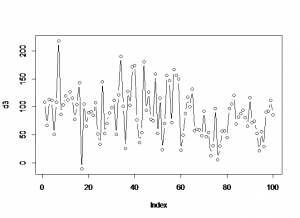Some fairly basic MDX stuff:
WITH
SET [a] AS [Geography].[City].[City] * [Product].[Category].Levels(1).Members
SET [b] AS [Date].[Calendar].Levels(1).Members * [Sales Territory].[Sales Territory].[Country]
SELECT
Order([a], [b].Item(0), BDESC ) ON ROWS
,[b] ON COLUMNS
FROM [Adventure Works];
Use the * (asterisk) to separate multiple columns and rows. It’s a bit like a similar use in R when plotting against two things, I think the library(doBy) uses the same .
…with selection and NON EMPTY:
WITH
SET [a] AS [Geography].[Country].&[Germany]
*[Product].[Category].Levels(1).Members
SET [b] AS [Date].[Calendar].Levels(1).Members
* [Sales Territory].[Sales Territory].[Country]
SELECT
Order([a], [b].Item(0), BDESC ) ON ROWS
,non empty{[b]} ON COLUMNS--[Geography].[City].&[Abingdon]&[ENG]
FROM [Adventure Works];
